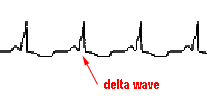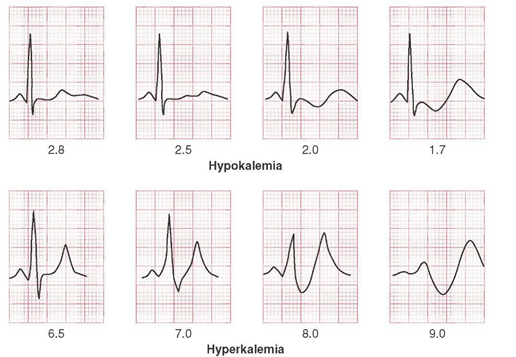The ECG changes associated with WPW syndrome include

Long QT interval
To measure the corrected QT interval (QTc)

QTc= QT measured / square root of the RR interval
The "normal" QTc is less than 0.44 but that the distribution of
QTc in the normal population overlaps with the distribution of the
QTc in those with LQT.
Other factors like T-wave morhology need to be considered and in
about 10% of cases the diagnosis can be difficult to make.
If suspicious further testing such exercise testing or Holter
monitoring is often helpful.
If there is any reason to
suspect long QT syndrome, then discuss with Cardiologist on
call.
Hypokalaemia an hyperkalaemia
Hypokalaemia: flattened or inverted T waves, ST
depression, PR prolongation.

Hyperkalaemia: peaked T waves, widened QRS.